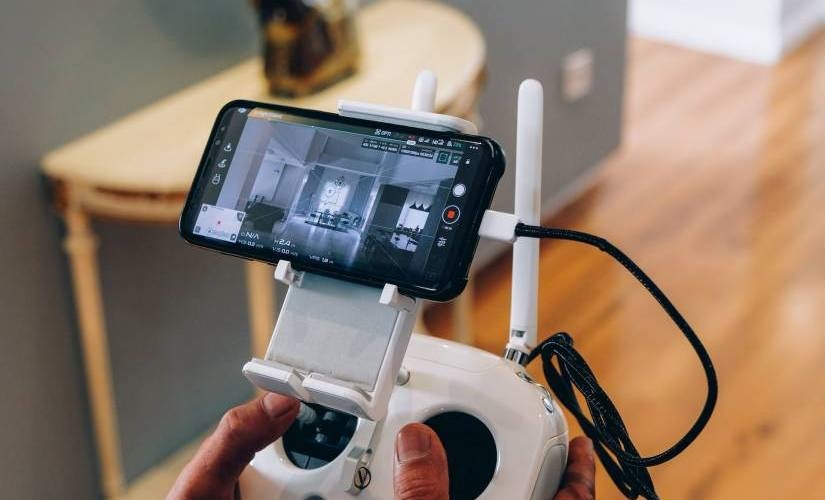Have You Heard of These 6 Amazing Ways to Use AI in Construction?
Have You Heard of These 6 Amazing Ways to Use AI in Construction?

Artificial intelligence might have started as the fictional villain of sci-fi stories, but it’s quickly becoming indispensable in many industries. The construction industry is one among many beginning to adopt this new technology. How can companies and contractors start employing AI in construction? How could this industry 4.0 technology change the industry in the coming years?
1. Programming an Extra Set of Eyes
Drone cameras have already become invaluable for contractors, especially for site surveying and inspections. While they can help keep inspectors and workers safe, they still require a live person behind the camera and the controls. In the future, users could train AI to see, analyze and understand the images they’re observing, reducing or eliminating the need for a human operator or drone pilot.
Human inspectors will still be necessary, but if programmers can teach an extra set of AI-powered eyes to recognize when something is incorrect or missing, it could help streamline these processes.
As a bonus, these AI eyes could potentially recognize or identify errors and safety issues human inspectors might overlook. Observational AI systems rely on pattern recognition and spend most of their time observing hundreds of thousands of images to ensure they can correctly identify their targets.
They don’t experience the problem of familiarity. It’s like editing a piece of text. The more often the author reads it, the more likely they are to overlook errors rather than fix them. AI observational systems don’t have that problem, making them more efficient for safety applications.
2. Turning Data into Actionable Insights
Construction might be one of the slowest industries to adopt new technologies. Nonetheless, that hasn’t stopped the slow introduction of smart building. Incorporating devices into a construction project generates massive amounts of data. Without an AI or machine learning system, that information languishes in digital limbo. Skilled analysts may be able to make heads or tails of it, but putting it to use requires additional tools.
In construction, AI can sort through massive amounts of data, find patterns and deliver actionable insights that can improve productivity and worksite efficiency. It can use equipment maintenance data to create a better care schedule, preventing costly downtime due to equipment failure. With enough information, it can even predict when these maintenance cycles should occur based on past data.
3. Adopting Virtual Assistants
Alexa or Siri might seem like something users only need after their shift ends, but these virtual assistants and many others can help improve outcomes. Digital helpers designed for construction applications can manage communication, bolster inter-team coordination, schedule and track appointments, and more. Advanced assistants can access data generated by the above technology and help with budgeting and estimation.
Modern helpers may take time to customize to a company’s specific needs, but their benefits vastly outweigh the time investment. Utilizing natural language processing (NLP) can make these virtual tools even more powerful. NLP allows users to speak to their virtual assistants as they would to the person next to them.
4. Incorporating AI Into Wearable Technologies
Like virtual assistants, wearable technology might not seem like it has much of a place in the construction industry, but that couldn’t be further from the truth. Fitbits and Apple Watches might not offer much, but they are far from the only wearable devices available in the construction industry.
Monitoring an employee’s heart rate and other vital statistics can indicate when they might be in distress. Fatigue monitors can prevent on-the-job accidents by alerting supervisors when someone is operating heavy equipment while not adequately rested. Impact sensors can detect when someone experiences a fall. Connecting these wearable sensors to a centralized AI in construction sites allows the system to monitor employees in real-time and send alerts as needed.
5. Procuring and Supply Chains
Supply chains across industries took a significant hit during the COVID-19 pandemic. The price of some construction supplies skyrocketed, and the supply chains for other materials slowed to a crawl — if they were still available. Incorporating AI into procurement and supply chain systems can help improve efficiency and reduce the chance an upset like the pandemic could derail these supply chains again.
There are applications for AI and related technologies throughout the supply chain, from manufacturing and harvesting to those last-mile deliveries. Sensors can collect information about everything from location to distance traveled. They can monitor temperature and humidity for materials requiring more climate control, making it easier to protect all necessary supplies while in transit. Pairing these sensors with an AI system can make sense of data while generating actionable insights.
6. Integrating Robotics and Automation
Contrary to the story popular media tries to spin, robots aren’t appearing in workplaces intending to steal jobs. Instead, they could help improve workplace efficiency and reduce on-the-job injuries by completing mundane, repetitive, or dangerous tasks. Introducing robotics and automation can lower the potential for stress injuries since construction workers are most frequently diagnosed with this type of ailment.
When it comes to dangerous tasks, AI-powered robotics or automation are ideal. These applications can include everything from cleaning tanks or operating in low-oxygen environments to completing tasks in situations that would otherwise be unsafe for human life. While it is currently possible to use these robots manually via remote control, adding AI to the mix would free up workers for more critical or complex tasks employers can’t automate.
Looking to the Future of AI in Construction
There are so many amazing applications for AI construction that it’s easy to forget it’s still novel technology. It will take some time before the industry is ready to adopt this technology and capitalize on all its benefits. AI could make all the difference for companies looking to differentiate themselves in this competitive field.
Featured Image Credit: Provided by the Author; Photo by Sam Moghadam Khamseh; Unsplash; Thank you!
The post Have You Heard of These 6 Amazing Ways to Use AI in Construction? appeared first on ReadWrite.
(28)


